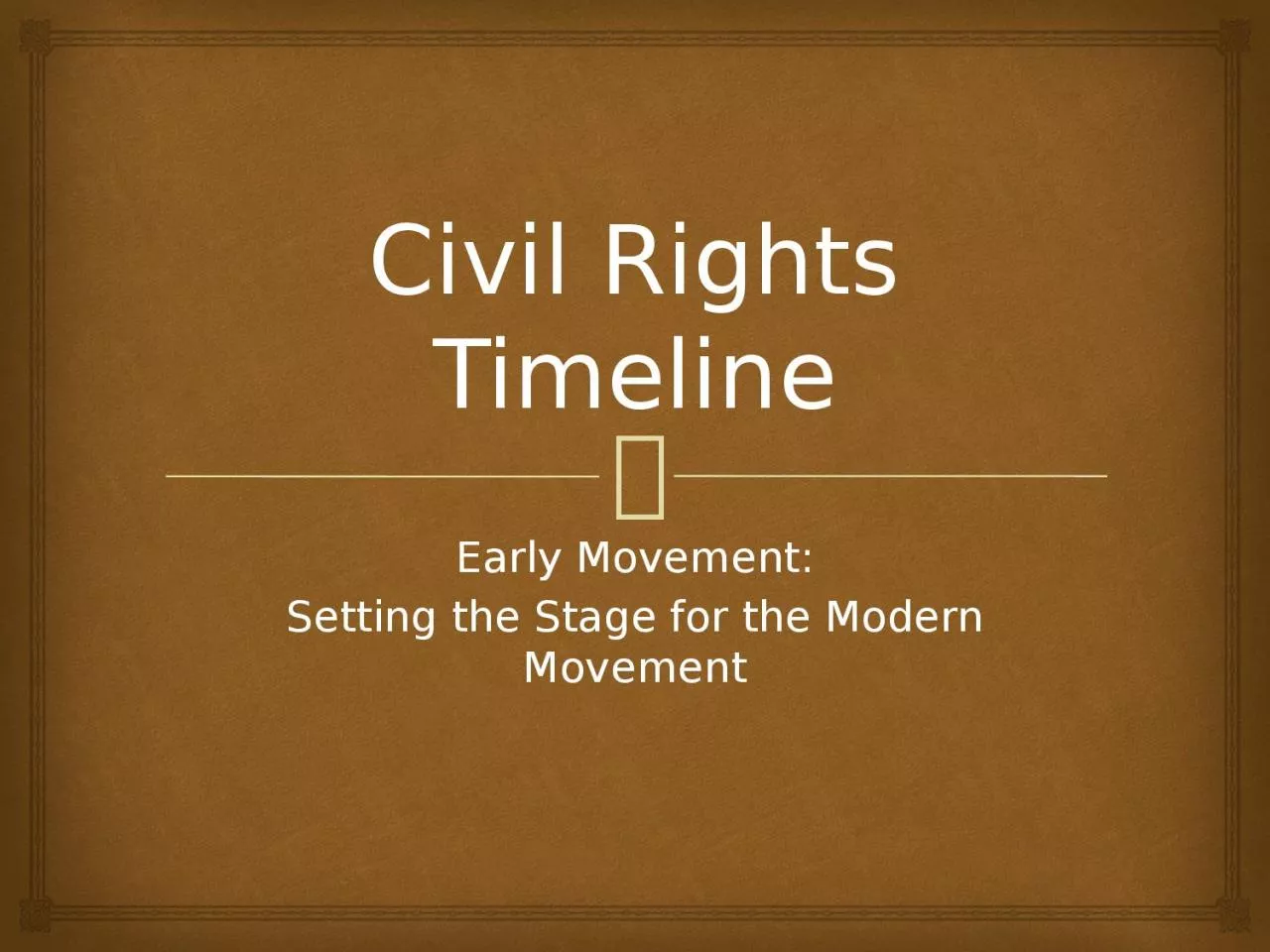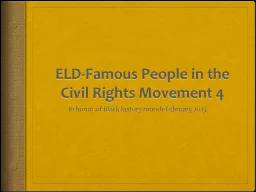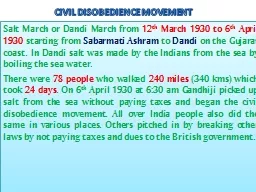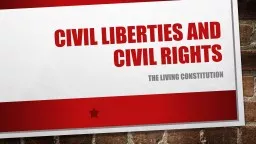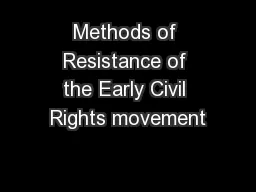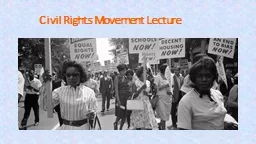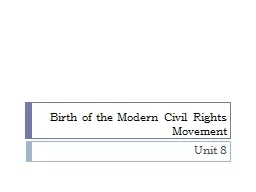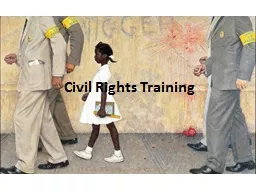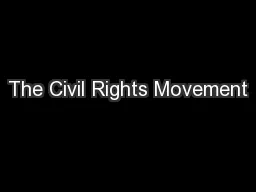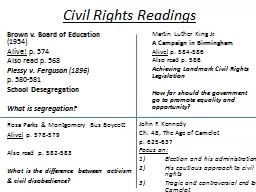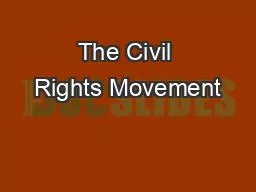PPT-Civil Rights Timeline Early Movement:
Author : skylar | Published Date : 2023-09-18
Setting the Stage for the Modern Movement Abolitionist Groups Form 1775 Founding of the Pennsylvania Society for Promoting the Abolition of Slavery PAS the worlds
Presentation Embed Code
Download Presentation
Download Presentation The PPT/PDF document "Civil Rights Timeline Early Movement:" is the property of its rightful owner. Permission is granted to download and print the materials on this website for personal, non-commercial use only, and to display it on your personal computer provided you do not modify the materials and that you retain all copyright notices contained in the materials. By downloading content from our website, you accept the terms of this agreement.
Civil Rights Timeline Early Movement:: Transcript
Download Rules Of Document
"Civil Rights Timeline Early Movement:"The content belongs to its owner. You may download and print it for personal use, without modification, and keep all copyright notices. By downloading, you agree to these terms.
Related Documents

